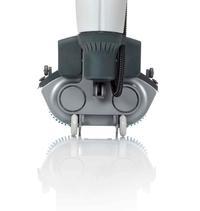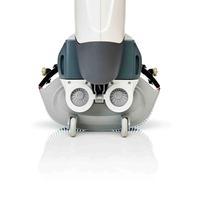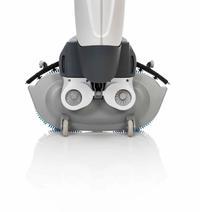You are reading: How To Clean Floors With The i-mop
01 January 2022
8min read time
Brooke Payne
How To Clean Floors With The i-mop
Share:
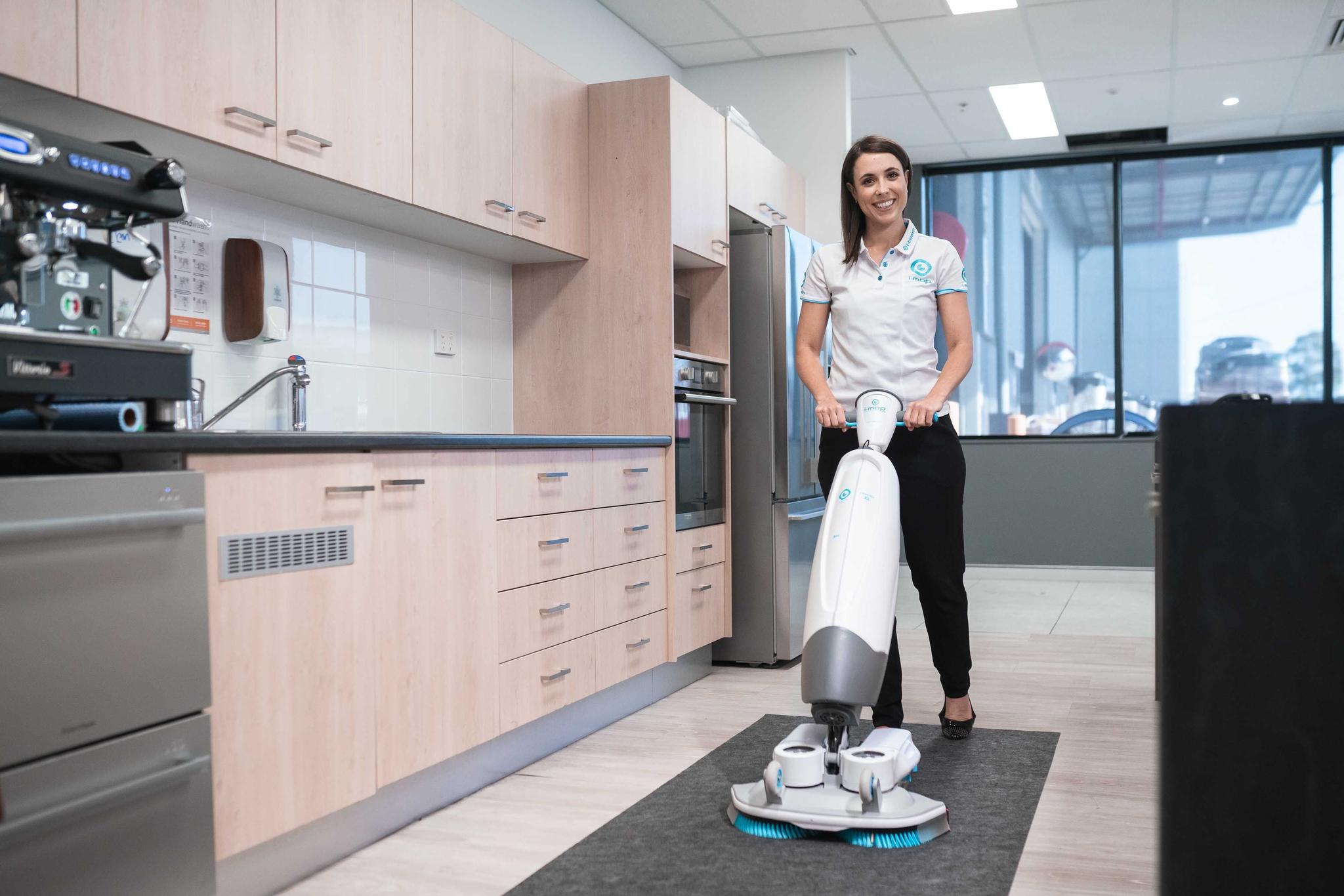
Wondering how to clean different floor types? Looking for the pros' cleaning tips?
Whether you are a beginner, a DIY’er looking for general guidance or a professional cleaner looking for some tips on some of the more obscure floor types out there, we’ve compiled an overview of key points to be aware of and how to approach the cleaning of various flooring types.
How to clean vinyl floors?
There are a broad range of vinyl floors in use in both commercial and domestic applications. Vinyls are available in a tremendous range of finishes and appearance – even very closely emulating the look of timber in some cases. Vinyl is typically a hardy and durable surface that is relatively easy to clean.
We do have some tips though on the best way to clean vinyl floors with our commercial floor cleaning machine, the i-mop. These do not need to be restricted to cleaning with the i-mop as they would apply with almost any brand of floor cleaning equipment.
For best cleaning results on structured vinyl floors (with an undulating or textured surface), we suggest the use of brushes rather than pads. For most structured vinyl floors, the regular blue i-mop brushes are great; however, when cleaning a highly textured (or non slip) vinyl, the use of the hard red brushes will provide better results.
Book your FREE demo of any of our floor scrubber machines, to see it in action.
On smooth vinyl floors, better cleaning results will be achieved with pad drives and pads instead of brushes. And the best cleaning pads to use? Green twister pads, which will provide the best appearance when used consistently.
The chemical recommendations when cleaning vinyl floors are the same as those for cleaning ceramic tile & grout. Including the golden rule – never overuse your cleaning chemical to avoid chemical residue buildup!
Find out more about how to clean vinyl floors here.
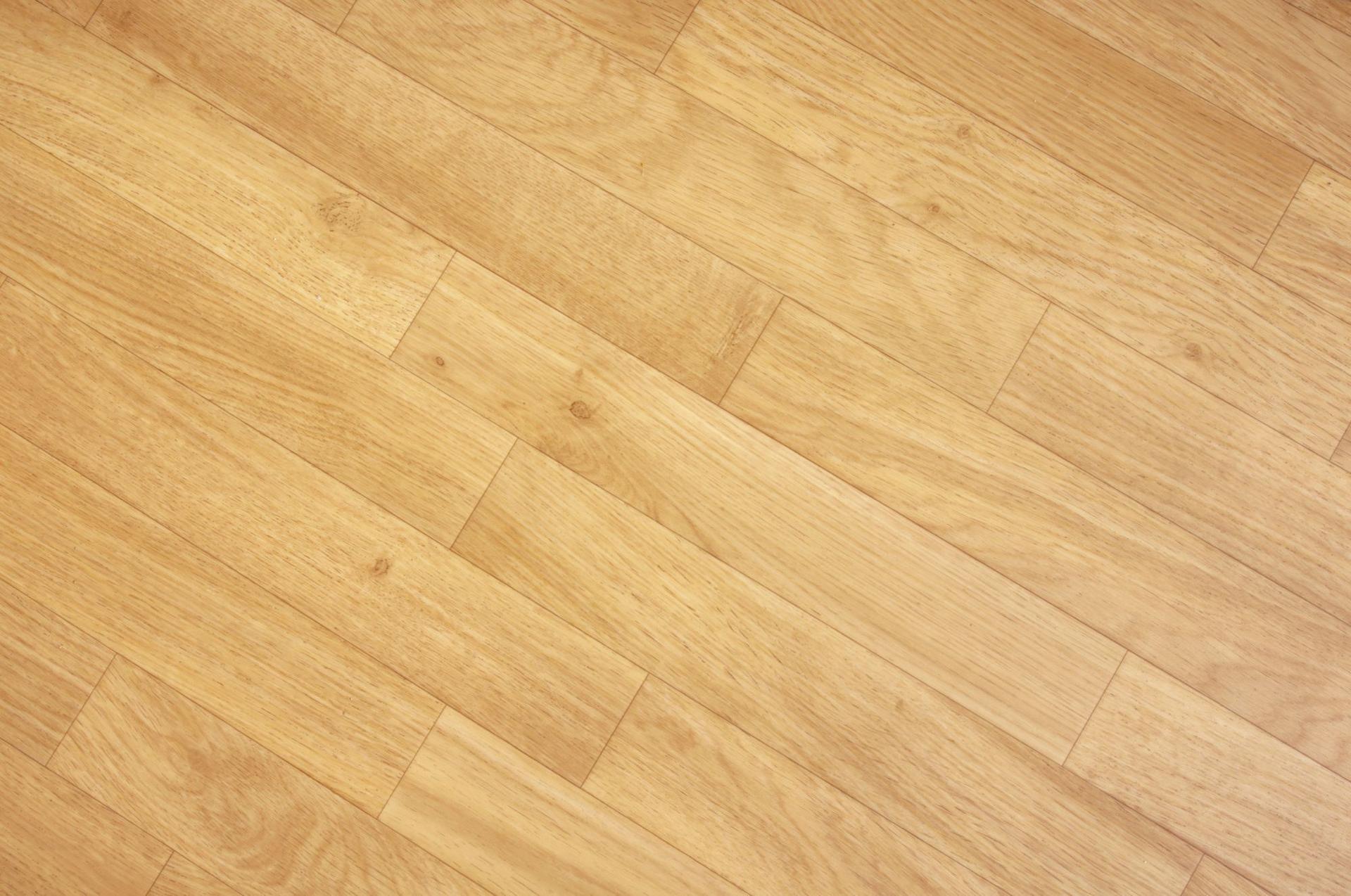
How to clean ceramic tiles?
Ceramic tiles are one of the most popular floor types encountered when cleaning in both commercial and domestic environments. Cleaning of ceramic tile & grout is quite straightforward as these manmade substrates are normally hardy and resistant to both alkaline and acidic cleaners.
A key tip for best results when cleaning ceramic tile & grout is to use the right floor cleaning equipment: you should use brushes rather than pads on your scrubber. Pads do not reach into the recesses of grout-lines so have difficulty effectively cleaning the grouted sections. Use a brush for best results on tiles.
Another important point: choose the right chemical/detergent for the application. At a high level, the broadest chemical recommendations for cleaning tiles are:
- An alkaline cleaner for kitchen and very greasy areas.
- A mildly acidic cleaner for washroom areas.
- A neutral cleaner for all general areas.
- If you have to use one product in all areas, a neutral cleaner would be the safe option.
Our last recommendation for cleaning ceramic tile & grout? Do not overuse chemicals.
Follow manufacturers recommended dilution rates – most will have different dilutions for deep cleaning vs maintenance or daily cleaning. Remember that when you clean with the i-mop you have the scrubbing power of 350rpm (500rpm on lite) brushes to do most of the work, so over-using chemical will only result in more chemical residue being left on the floor. Book a demo of the i-mop here to see its cleaning efficiency for yourself.
Find out more about how to clean ceramic tiles here .
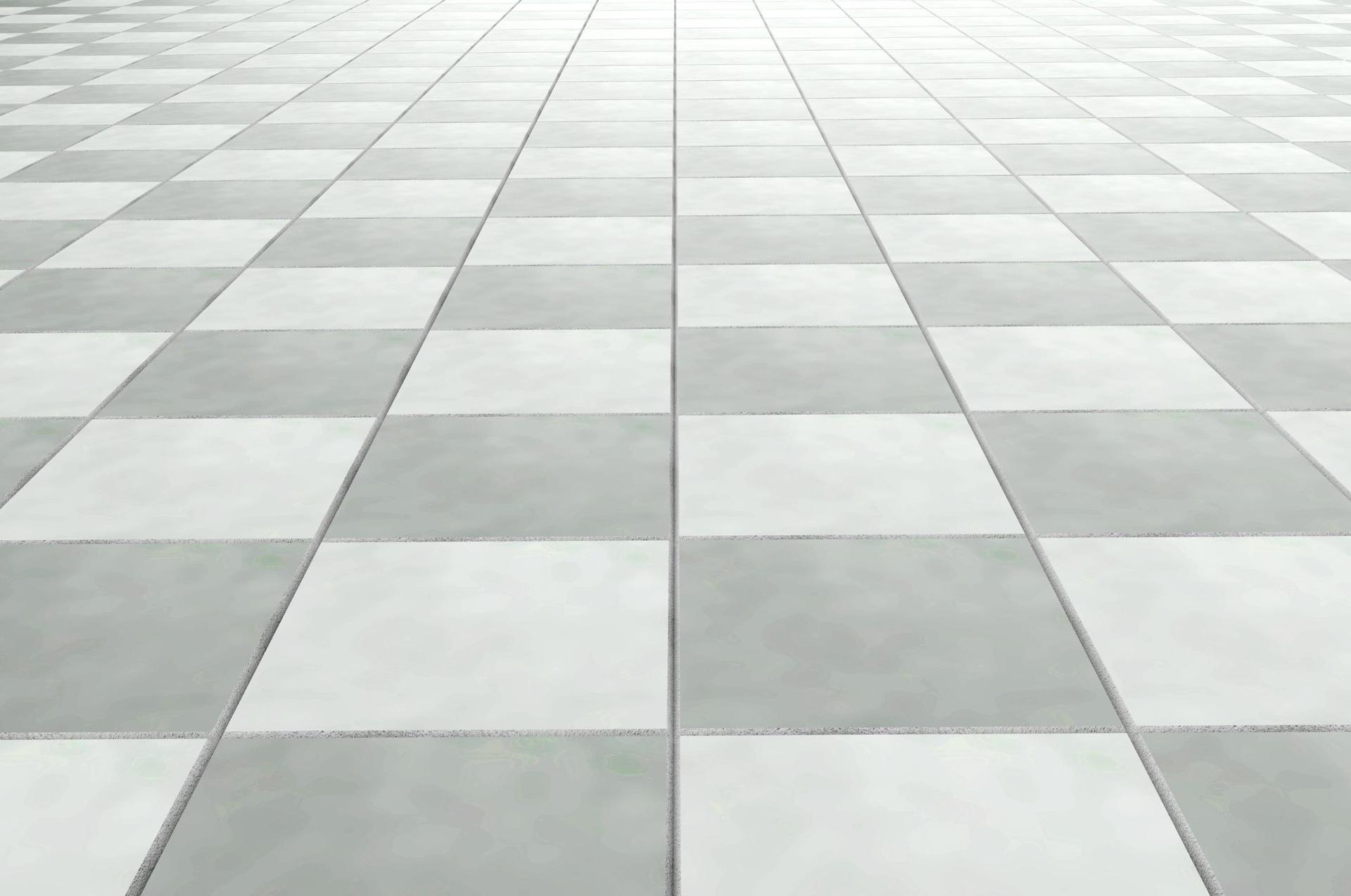
How to clean concrete floors?
Wondering how to clean a concrete floor? The good news is that concrete is generally quite easy to look after. Although concrete is a manmade substrate, the care and cleaning processes of a concrete floor is generally very similar to that of natural products such as granite.
The key points for best cleaning results with concrete floors?
- Use Green twister pads to clean polished concrete (these will keep the gloss levels up)
- Use brushes on rougher concrete (Blue regular brushes or hard red brushes)
- Avoid use of acids (just like the natural stone floors. Acids will etch concrete over time and dull the appearance of the floor)
And of course: Don’t go bananas with the chemical usage, folks. Follow the chemical label instructions and let the i-mop brushes do most of the cleaning work.
One other tip with concrete floors: We often get asked how to remove stains from concrete. This can be done with the use of a poultice by making up a paste of diatomaceous earth with water to a toothpaste-like consistency, applying it in a layer 1cm thick to the stain, covering it with glad wrap with a few 1mm holes in the glad wrap to allow it to breathe, sealing the edges of the glad wrap, and leaving it for 24 hours.
As the poultice dries it will draw the stain up into the poultice. You may need to repeat this several times for larger/older stains. This same process can be used to remove stains from other types of natural stone floors such as marble/granite/travertine/limestone/sandstone and some terrazzo & ceramic floors as well.
Want to find out about our financing options? Get in touch.
Find out more about how to clean concrete floors here .
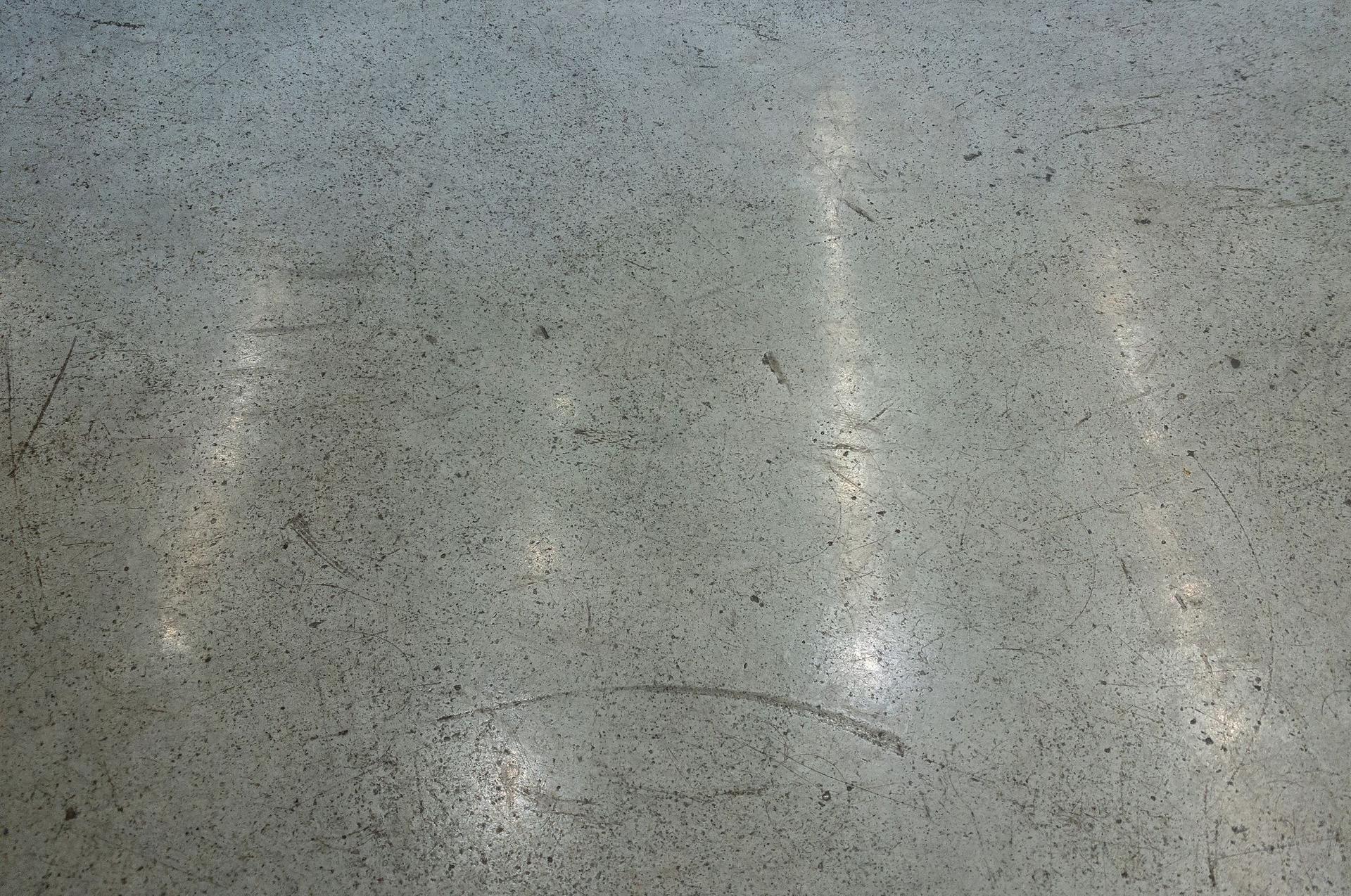
How to clean slate floors?
Slate is a fine-grained metamorphic natural stone which is mostly used in either domestic or (less commonly) in small format retail or commercial applications.
Slate can be challenging to clean especially if you are trying to deep clean the floor, particularly important when doing commercial cleaning, and it has been previously sealed with a topical (top-coat) sealer. The sealer tends to wear away over time and then a deep cleaning process can remove a lot of the sealer – but not all – leaving the slate floor looking patchy and sometimes worse than when you started! In these cases you really need to be equipped and prepared to do a full strip and seal of the slate floor. This can be a messy and time-consuming process.
The good news is that the maintenance cleaning process for slate is quite straightforward. As slate is generally quite rough, the use of the regular blue brushes on the i-mop floor scrubber is your best bet. You can book a demo if you're interested in seeing how the i-mop can easily clean all floors.
Find out more about how to clean slate floors here .

How to clean terracotta floors?
Terracotta is a fired clay tile and has a distinctive brownish red colour. Terracotta was a very popular floor tile throughout the 1980’s and 1990’s across Australia and New Zealand, however its popularity has faded in more recent times.
Depending on the way the terracotta tile has been made and the heat it was fired at, terracotta can be a very porous tile, which means it will absorb dirt and staining more easily.
For best results when cleaning terracotta, we recommend the use of the regular blue brushes on your i-mop. If using detergent, a neutral or mild alkaline detergent is best for general cleaning of any terracotta floor. For deep cleaning terracotta, strong solutions of these same detergents may be used, ensuring you do not let the detergent dry on the surface.
Terracotta is rarely used on bathroom floors, however it has been a diluted acidic cleaner will provide the best results when performing a periodic deep clean.
In some situations, terracotta floors may have been sealed with a topical (top-coat) sealer. If the terracotta is shiny in some areas (edges and corners) and dull in high traffic areas this is a good indicator it has a topical sealer. This is similar to the situation you will face when cleaning slate floors; Deep cleaning of a terracotta floor that has been sealed with a topical sealer may result in a blotchy looking floor as some of the sealer will be removed, but often not all.
For a full deep clean, you will need to strip the floor thoroughly with the use of a floor stripping chemical and black stripping pads. You may also choose to reapply a sealer to the floor.
Find out more on how to clean terracotta floors here .

How to clean travertine floors?
Travertine is one of the most beautiful natural stone floors. Travertine is mostly filled and cut into tiles, which are then honed to give a slight sheen to the floor.
Travertine is a relatively soft stone and must be treated with care. As with all natural stone floors, avoid the use of acidic cleaning chemicals to clean the floor.
Contact us to speak to a professional about your specific cleaning needs.
Travertine floors should be treated with a penetrating sealer on a periodic basis in order to fortify the stone against staining, helping to keep the floor clean and giving additional time to clean up spills before they stain or damage the floor.
On any smooth filled travertine floor, the use of green twister pads on the i-mop will produce the best cleaning results. If the floor is not filled and honed and has the natural holes and pockmarks in the travertine (more common in pavers) the use of regular blue brushes is preferred.
Find out more about how to clean travertine floors here .
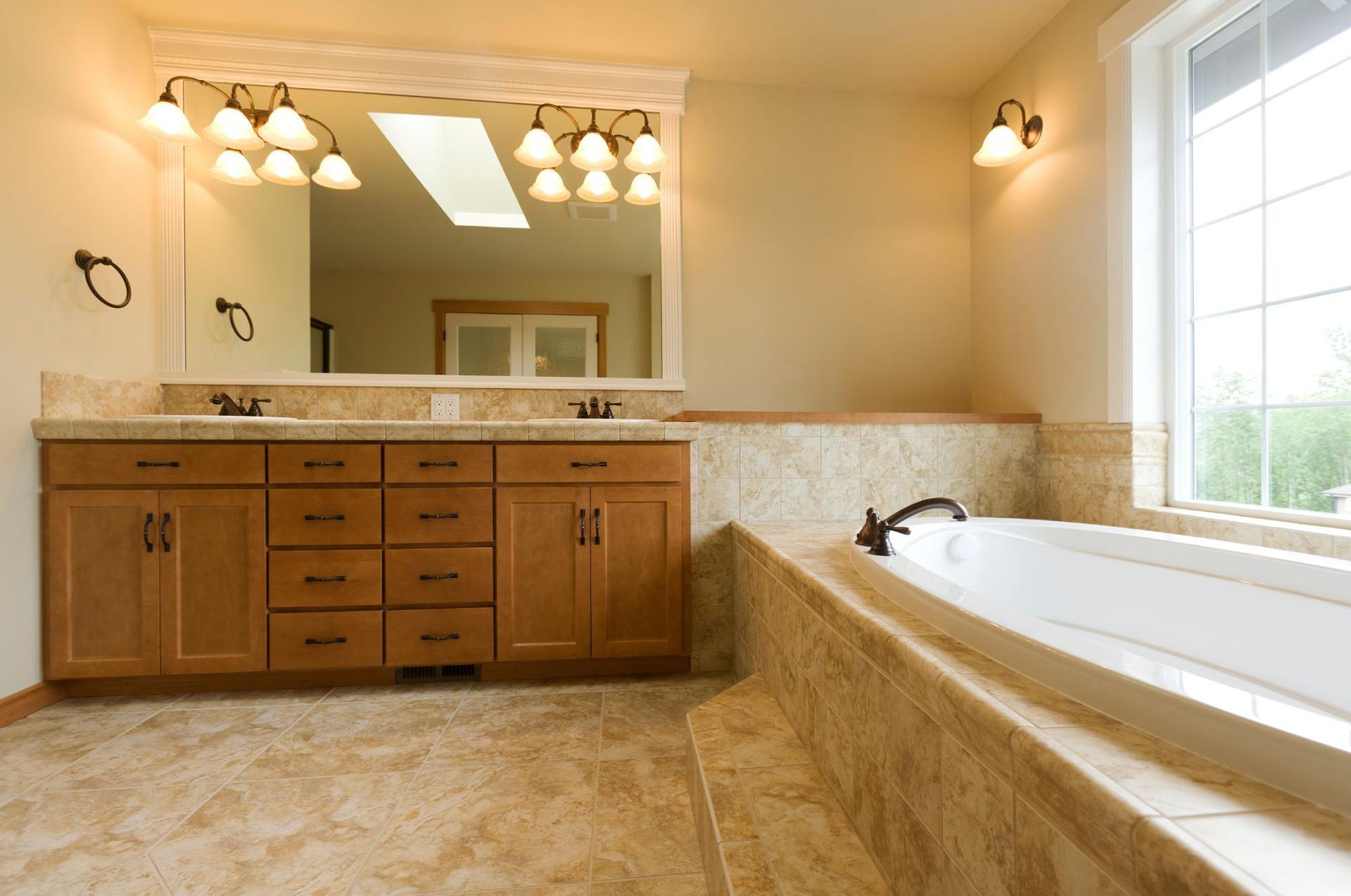
How to clean granite floors?
Granite floors are very popular in high-end commercial and retail environments. Granite is relatively hardy for a natural stone (significantly harder than marble) which makes it less susceptible to wear, slightly less susceptible to chemical damage from poor cleaning processes, and generally more forgiving than marble, travertine and other natural stones.
Granite can be highly polished, honed (matt finish) or flamed where it has an almost rough appearance. The cleaning process for all these granite finishes are the same however there is subtle differences in the choices of brushes and pads.
Like marble, granite is susceptible to acidic products so these should be avoided. However, like marble, the same exception applies should you have granite in a bathroom environment. You may need to use a very mildly acidic product such as i-dose E33 in order to get better results, as an alkaline or neutral cleaner is poorly matched for cleaning washroom floors.
For best results when cleaning honed or polished Granite floors, when using our industrial floor scrubber the i-mop, we suggest the use of pad drives and green twister pads rather than brushes. For flamed granite floors which have a rougher appearance, regular blue brushes should be used rather than pads.
Find out more on how to clean granite floors here .

How to clean terrazzo floors?
Terrazzo floors are extremely popular in high traffic public environments such as shopping centres large commercial buildings and transport hubs. Most terrazzo floors are sealed with a topical sealer (ie a sealer that site on top of the surface rather than penetrating in), which both protects the substrate and also in most cases is buffed regularly to give a high gloss.
Terrazzo is quite straightforward to clean with the i-mop. Our key tips for cleaning terrazzo with your i-mop or floor scrubber is to use pads for best results – green twister pads are best. Alternatively, a red pad is also suitable. The regular blue scrubbing brushes can be used as a 2nd preference should you not have pad drives.
As Terrazzo is typically installed in very large applications, it would be rare to be cleaning a terrazzo floor in a facility that does not have an automated chemical dosing system which you would use to fill your i-mop or other floor scrubber. However in the event that you are using manual dilution, we strongly suggest you use the i-dose chemical dosing system on your i-mop, or use particular care to follow manufacturers dilution rates to avoid chemical residue buildup on the floor.
Find out more on how to clean terrazzo floors here.
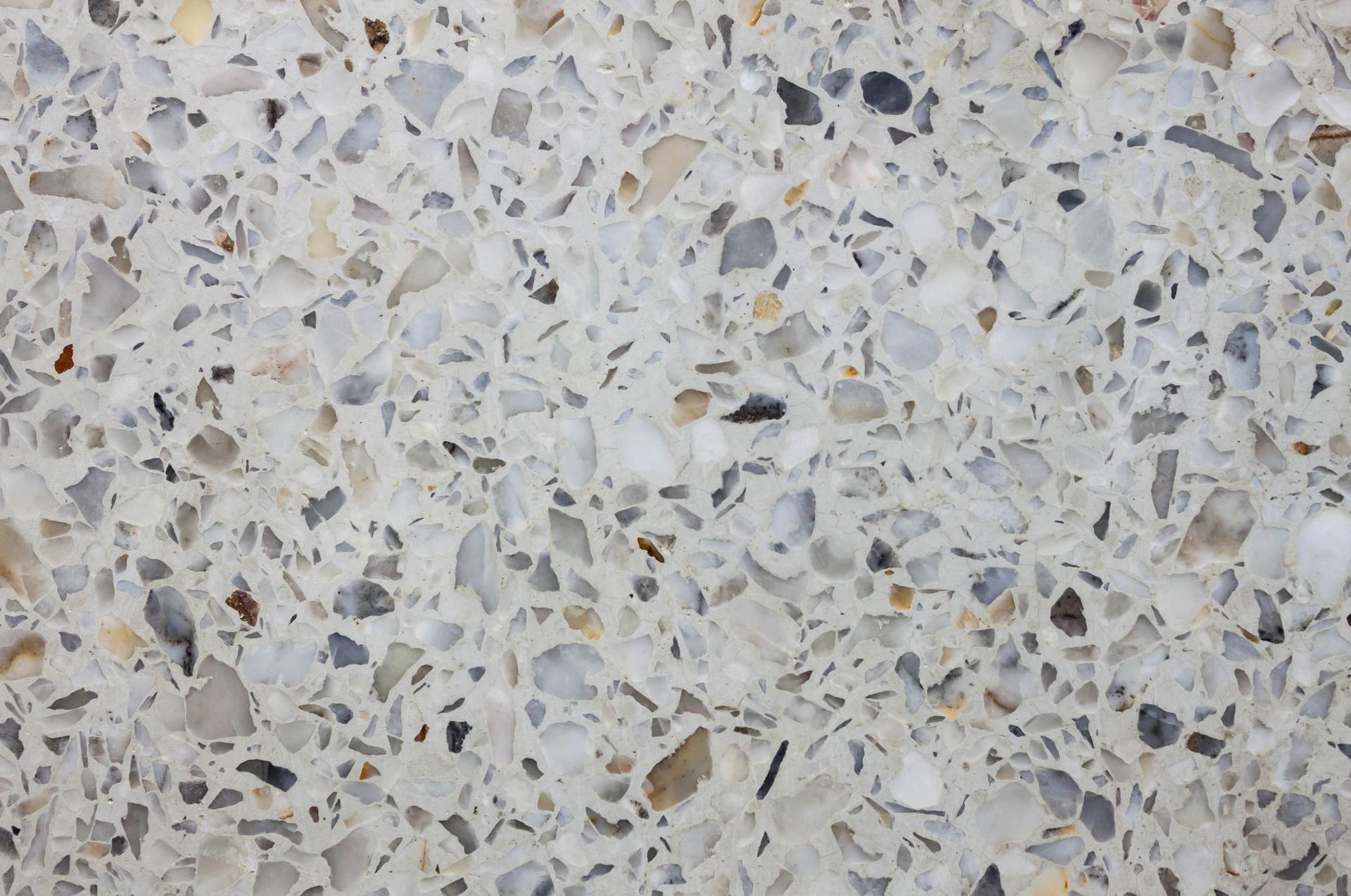
How to clean cork floors?
Cork flooring is relatively rare compared to more common types of floors such as ceramic and porcelain tiles. Similar to timber floors (cork comes from the cork tree, of course!), cork floors are softer and more susceptible to certain types of wear and damage than tile and many stone floors.
Having said that, a properly installed and sealed cork floor can be relatively durable and is quite straightforward to clean and maintain.
Cork floors are normally quite smooth, so the use of pad drives and pads can give an excellent cleaning result. The pad of choice would be a red cleaning pad, or if the floor or sealer is quite soft, or if it is very high gloss, a white pad can be used. Bear in mind that white pads will not remove scuff marks, use a red pad to remove scuff marks. As an alternative to pads, we recommend the soft light blue brushes for cleaning cork with our industrial autoscrubber, the i-mop.
You can use detergents when cleaning cork; however, as always, do not overuse. Follow label directions and dilution rates.
Read: Why won't my floor tiles stay clean?
Our final top tip for cleaning cork floors? Select the Eco mode on your i-mop to reduce the amount of water applied to the floor. While cork is more resistant to excess water than hardwood floors – and while the i-mop leaves floors incredibly dry, it's a good idea to minimise water usage. Get in touch with us here if you want to see it for yourself.
Find out more about how to clean cork floors here .

How to clean wood floors?
Wondering how to clean a timber floor? And whether you can use water to clean a wood floor? Or whether you can mop a timber floor?
All common questions!
The warmth and look of a natural timber floor, whether solid or engineered wood, make it hard not to love. Timber has an incredible natural beauty which makes it a common choice for residential and light commercial applications.
Timber floors do have their downsides though as the natural surface is relatively soft, making them more susceptible to denting and marking, and meaning you need to use care when cleaning a timber floor
Read more about embracing the future: manual to mechanical cleaning in Australia and New Zealand.
The good news is that, with the i-mop, you can mop virtually all timber floors and keep them looking clean.
A few rules to follow to care for your wood floor:
- Always vacuum, sweep or dust-mop before cleaning
- Use the soft light blue brushes on the i-mop
- Never use an acidic based cleaning agents.
- Use eco mode to reduce water usage. While the i-mop recovers virtually all the water it applies within 1-2 seconds, it’s always good to be on the safe side.
Find out more on how to clean wood floors here .
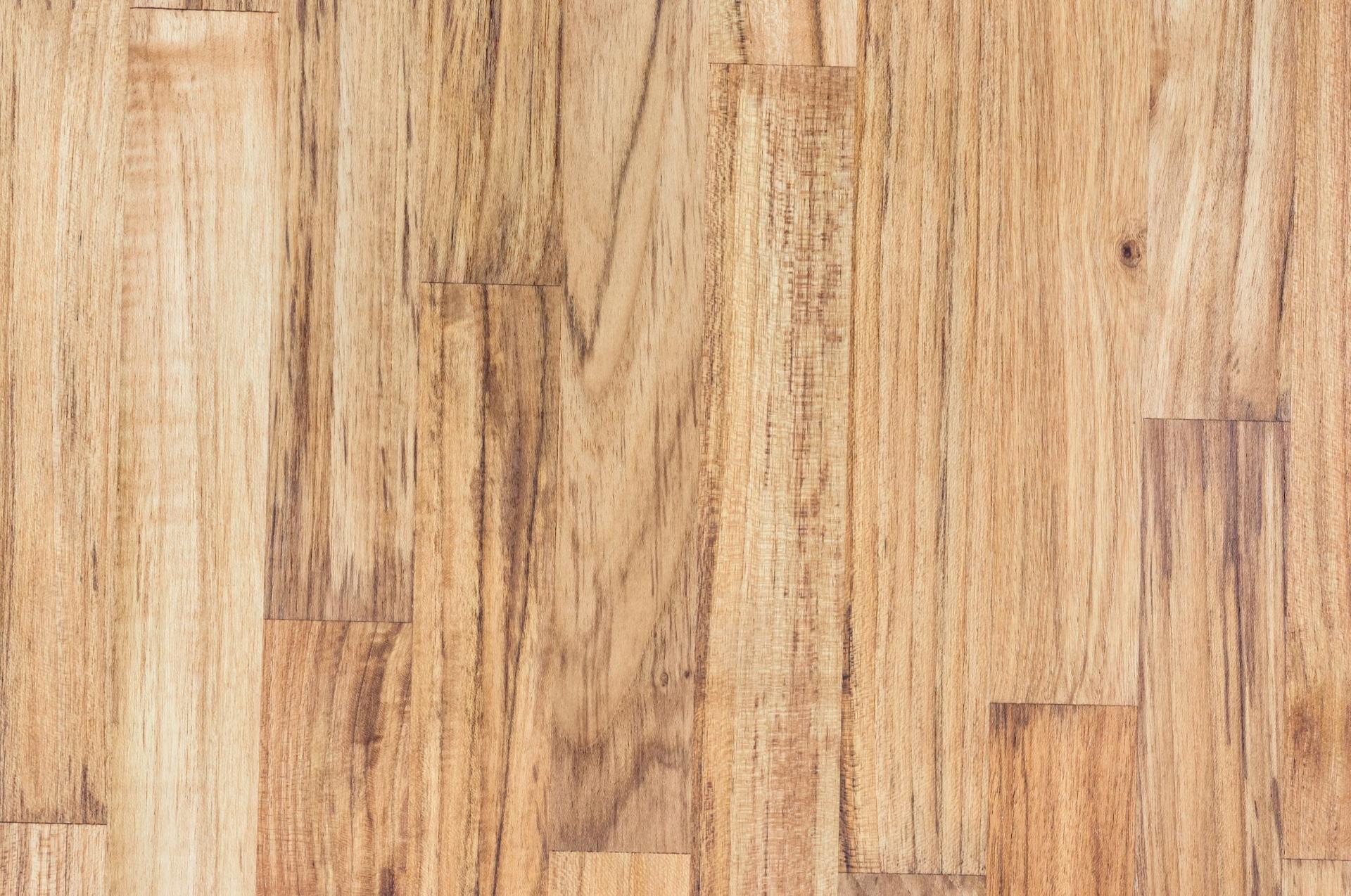
How to clean marble floors?
Well laid and maintained marble makes for a beautiful floor surface. However, as marble is softer than many natural stones and manmade substrates, cleaning marble floors requires an additional level of care.
When cleaning marble floors avoid the use of any acidic chemical products as these will etch and damage the appearance of the floor. The only exception to this may be in a bathroom environment where periodic use of a very mildly acidic diluted solution (such as i-dose E33) may be required to achieve acceptable results – remembering that it would be rare to find marble flooring in a bathroom except for in some domestic applications.
To maintain the optimum appearance of a polished marble floor, we strongly recommend that Green twister diamond pads are used to clean the floor. The Green twister pads contain diamond technology to microscopically hone the surface of the floor over time and maintain a highly polished appearance.
Find out more about how to clean marble floors here .
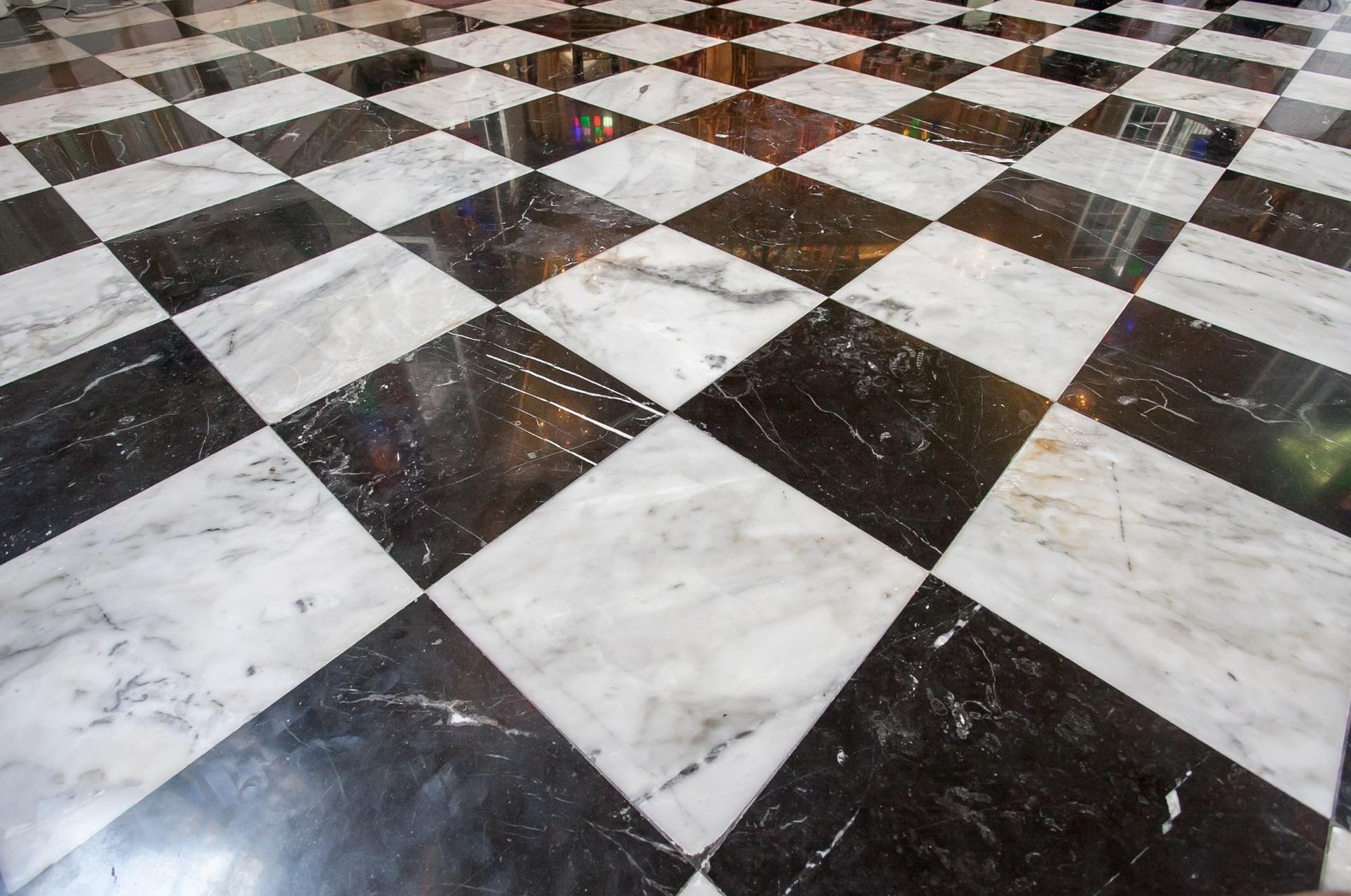
How to clean rubber floors?
Rubber floors are common in athletic and weight training areas. Rubber flooring is relatively low maintenance as it does not require sealing, and while most rubber floors have some texture that gives them a decent level of grip, cleaning of rubber floors is relatively straightforward.
Rubber floors are quite forgiving in their maintenance requirements; however, there are some characteristics to understand.
When cleaning textured rubber floors a floor scrubber with a roller type brush will give excellent results; however, these type of scrubbers are not as versatile as a disc type scrubber (such as the i-mop) for cleaning of both textured and smooth rubber floors. When cleaning with a disc type floor scrubber, natural hair brushes are recommended as these have lower friction than polypropylene and nylon brushes.
Disc type floor scrubbers will also be much more effective at removing scuff marks from rubber flooring, and the use of a deep scrub bracket on your i-mop may be useful to enable you to buff a smooth rubber floor to restore sheen. Use red pads to buff a rubber floor.
Can you use detergent on a rubber floor? No problems, but no acids. Neutral or mild alkaline detergents only.
Watch this video to find out what the best floor scrubber for a gym floor is.
Products featured in this Article
Join the movement that's changing what clean means.
Be part of a cleaner world. Get a live demo at a time that suits you.
Book a Demo